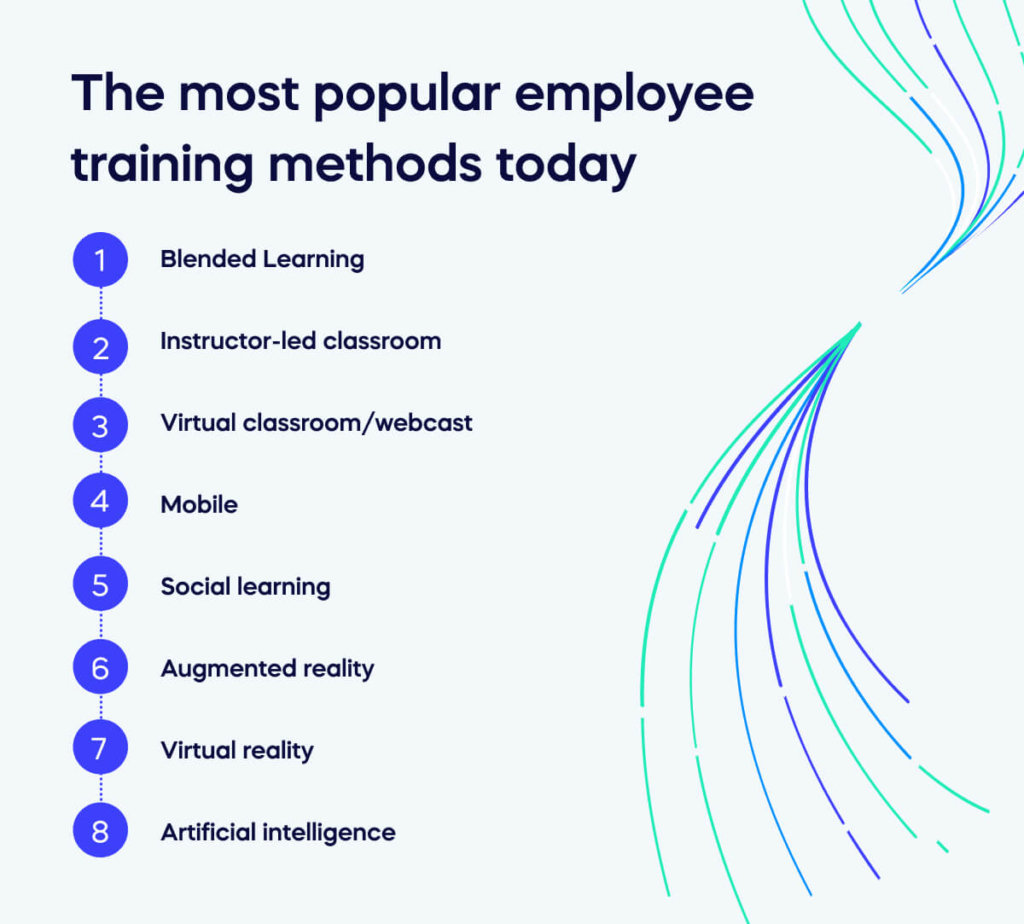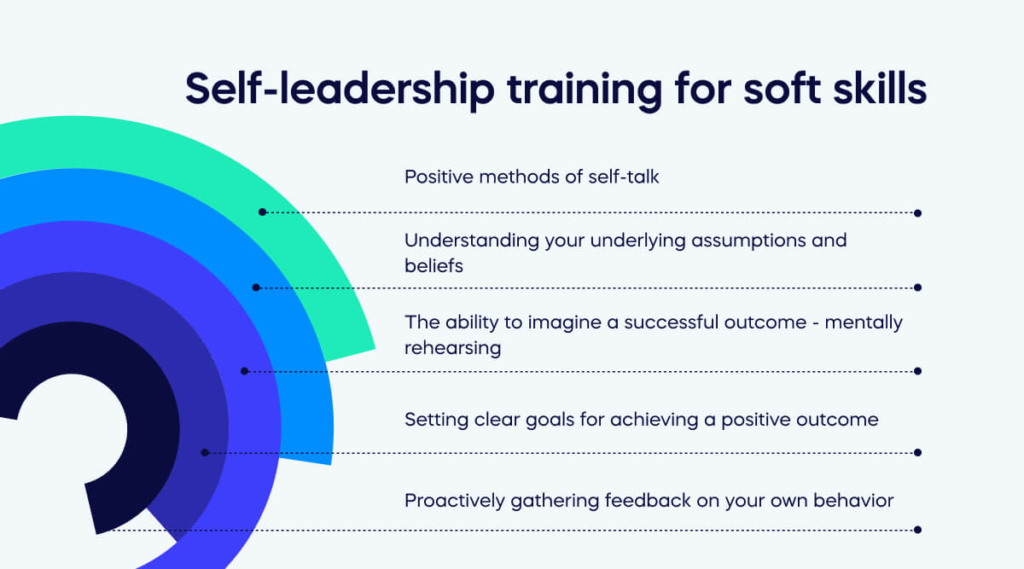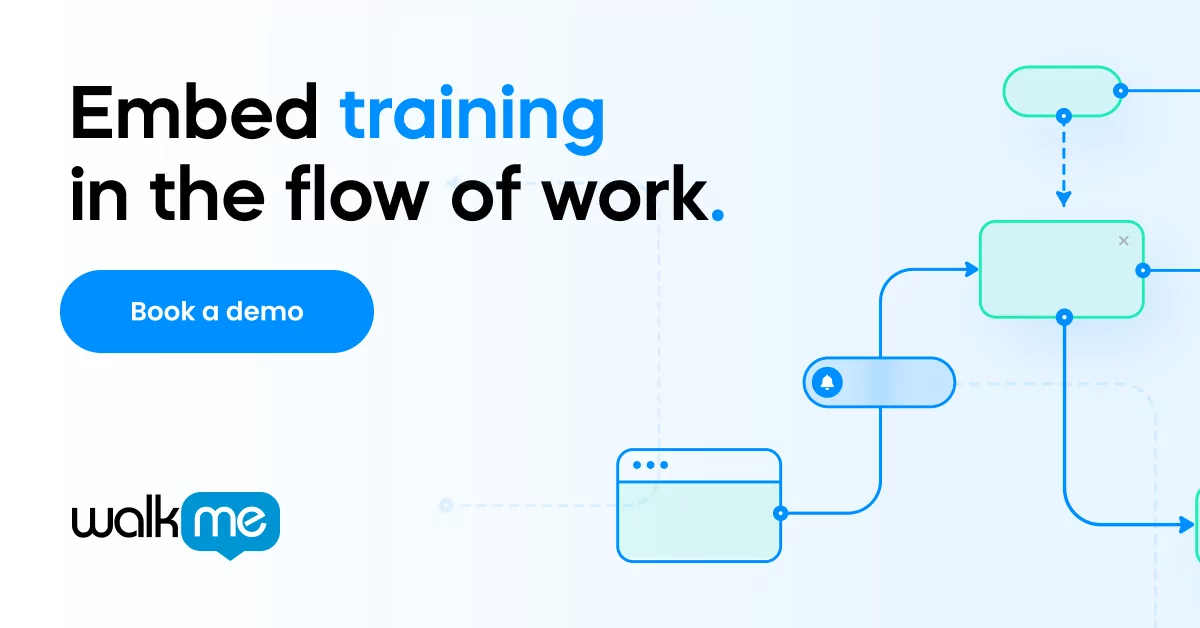When organizations comprehend the variety of training methods available, they can tailor their strategy to fit the specific needs of their learners and the demands of the topic at hand.
A deep dive into various training techniques can boost involvement, reinforce knowledge retention, and promote skill growth, resulting in more potent and productive learning experiences.
This article introduces popular, crucial, and impactful employee training methods. We won’t delve into every training method – only the ones that truly matter!
Here’s what the article will do:
- Explain how we chose our nine training methods from a combination of popularity and innovation;
- Assess the four most popular methods – blended, instructor-led, mobile, and virtual classroom;
- We’ll look at research-based methods, including informal training, self-leadership training, game-based learning, and training-oriented infrastructure.
At the end of the article, we delve into Digital Adoption Platforms (or DAPs). If you get a DAP up and running, your company training needs suddenly become easier.
Like anything in teaching, no method will truly “work” all the time. But if you know your options, you can make better choices. And with 60% of CEOs pressuring HR leaders to upskill their employees, it’s a good time to figure out what works for your staff.
What are the most popular employee training methods today?

Even if you’re an experienced trainer, you’ve got to know where the sector is.
Fortunately, Statista has released figures for the most popular training delivery methods in the US:
- Blended Learning
- Instructor-led classroom
- Virtual classroom/webcast
- Mobile
- Social learning
- Augmented reality
- Virtual reality
- Artificial intelligence
Based on their data, the top four methods are widely used, while social learning, AR, VR, and AI have not gained significant traction. In this article, we will focus on exploring these top four methods. We will also introduce five more research-driven approaches to the list.
As mentioned earlier, these include informal training, self-leadership training, game-based learning, and training-oriented infrastructure. By doing so, we aim to enhance the quality and effectiveness of the content while maintaining its original meaning.
Blended learning methods
Blended learning integrates traditional face-to-face teaching methods and online learning. It is an effective training method due to its versatility and flexibility. It caters to various learning styles and paces, allowing learners to grasp concepts at their convenience and comfort.
Furthermore, blended learning encourages learners to take control of their learning journey, fostering self-discipline and independent learning. This combination of approaches also ensures that learning is not interrupted in times of uncertainty.
Classroom-based instructor-led training methods
Instructor-led classroom training methods may be old-fashioned. But they are still effective educational strategies.
When it’s done well, the immersive and interactive nature of the classroom environment enables real-time feedback and personalized guidance from instructors, fostering students’ conceptual understanding and problem-solving abilities. Additionally, the social aspect of classroom learning enhances communication skills and encourages collaborative problem-solving, which are crucial for the holistic development of learners. Instructor-led methods can also promote discipline and regularity, essential elements for effective learning.
Virtual classroom or webcast-based methods
Virtual classroom or webcast-based methods offer a multitude of benefits for professional training programs. They provide the convenience of location flexibility, removing geographical barriers and reducing travel and accommodation costs. This makes it easier for staff members spread across different locations to access the same training simultaneously. In the virtual environment, instructors can utilize multimedia, such as videos, infographics, and interactive quizzes, to enhance the learning experience.
Recording sessions offer an additional advantage, allowing employees to revisit the content whenever necessary, reinforcing their learning. Furthermore, these methods promote a safe and comfortable learning environment, particularly pertinent in times of health crises or for remote teams.
These digital platforms also enable scalable, consistent training delivery, ensuring that each staff member receives the same quality of instruction, regardless of their location or timing.
Mobile learning methods
Mobile learning methods are particularly useful due to their inherent flexibility and accessibility. Given the ubiquity of mobile devices, learning materials can be accessed anytime and from anywhere, allowing individuals to fill idle moments with productive learning sessions. This adaptability also supports microlearning, providing educational content in small, digestible chunks boosting learner engagement and retention.
Additionally, mobile learning can offer personalized experiences, adapting to individual learning styles and speeds. In a professional setting, the instant access to essential information that mobile learning provides significantly aids in on-the-spot decision-making and problem-solving.
Furthermore, mobile learning ensures a consistent training experience for geographically dispersed teams, promoting a unified learning culture.
Informal training (or “on-the-job” training)
Although informal training is a regular part of corporate life, researchers are only now figuring out how to maximize this resource. For example, Erica Smith and Andrew Smith have recently explained the role of informal learning in Australian companies.
They found that over 80% of employees regarded informal training methods as important. In many cases, it was higher: in the largest companies, over 90% think informal training is important.
Informal training can include:
- Supervision from managers to make sure employees understand their job role
- Opportunities to extend their role (with support)
- Mentors or buddies
- Structured workload
- watching other employees do their jobs
- regular meetings about lessons learned from the workplace
Informal training methods do not need to be complicated. But you should understand how to maximize this employee training method in your company.
Methods of practice and feedback
This is a simple enough method. But it’s important enough that Ruth Colvin Clark gives 100 pages to the topic in her magisterial 2020 book Evidence-Based Training Methods. Although school teachers are (usually) familiar with practice and feedback, many business training programs could improve their work this way.
Think of it like this: a child doesn’t learn to write by looking at letters.
Sure, learning how to complete managerial tasks is a more sophisticated thing. But when people have the opportunity to try things out, they’ll make valuable mistakes. And that’s true whether the training is for practical skills or not.
A trainer who gives appropriate feedback is doing a big favor. That means they should add explanations, focus on the task, and set new targets for the learner.
In many cases, group feedback can be extremely useful (and far more time-effective).
Self-leadership training for soft skills

Self-leadership training is very useful for dealing with difficult emotions and stressful experiences at work. Jolanda Botke and Marianne Woerkom have explained how it can apply to the needs of the service industry in a 2023 article.
As many people know, if you can handle your emotions better, you will find life far easier to deal with. Self-leadership training helps employees achieve these skills in the professional sphere. Some of the most relevant techniques they are trained in include:
- Positive methods of self-talk
- Understanding your underlying assumptions and beliefs
- The ability to imagine a successful outcome – mentally rehearsing
- Setting clear goals for achieving a positive outcome
- Proactively gathering feedback on your own behavior.
This training method reminds us how different problems require different solutions: depending on your organization’s challenges, an unconventional training approach could be the most appropriate.
Using games effectively
Gamified education is a big deal. Apps like Duolingo now have millions of users. And most staff are accustomed to dealing with their learning in bite-size puzzles.
But there is more depth to games. The concept of “serious games” helps corporate training programs deliver excellent training – with all the confidence of excellent research-based evidence!
With appropriate applications, games can:
- Engage staff trainees
- Test new skills in a safe environment
- Receive real-time feedback on their work
- Facilitate team-building activities.
For the workplace, a great deal of research justifies their value. John Denholm and Linda Lee-Davis set the agenda for educational games in their 2017 book Enhancing education and training initiatives through serious games – while organizations like the Serious Games Society show how there is a lot of interest in the topic.
Getting leadership buy-in
Leadership buy-in – Is that a training method??
Leadership might not save you today if you’re looking for a good method for the training session this afternoon. Sorry about that.
But you need a good company infrastructure if you want the right training. That’s what Sue Brigham explains in a 2022 article in the Harvard Business Review.
She emphasizes that training isn’t always necessary: depending on the problem you want to fix, training could be just one of the solutions. Resources, organizational structure, or experience might all be the issue.
The key point is – management staff must have the time and freedom to plan and evaluate training interventions. If not, the training might be a waste of time in the first place.
Final Thoughts: Do you need a training method or a training platform?
Of course – there are plenty of methods that we haven’t mentioned here – such as employee cross-training, specific online training packages, or employee training plans.
But before we finish this article, you should know about DAPs – a “game changer” for workplace training and efficiency.
A DAP offers structured walkthroughs, optimized workflows, and contextual help to train staff about software. If you’ve got a complex ecosystem of applications, a good DAP (like WalkMe) could help get the most out of your systems.
In our view, there is no such thing as the “best training methods.” We have many training methods, all of which can be useful for different situations.


